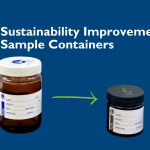
Compaction Testing at i2 Analytical
Compaction testing of soil is the process by which the solid particles are packed more closely together, usually by mechanical means, thereby increasing the dry density of the soil.
To determine the compaction criteria of a soil that will ultimately be used for the on site compaction process, a range of compaction related tests are undertaken. These tests enable the relationship between dry density and moisture content that will reduce the void content of a material. This in turn will increase its strength and reduce subsequent consolidation via moisture and soil particle movement under load.
Compaction testing in the laboratory is used on site to control the earthworks compaction process by the contractor and is known as ‘end product testing’. These tests will help determine the compaction plant and methodology on site and will help in highlighting changes of material as a project proceeds, generally via pass/fail criteria. Compaction testing in the field to ensure compliance is undertaken using a range of methods, all undertaken by i2 Analytical Site Services teams.
i2 Analytical are able to undertake all standard methods on earthworks and construction materials as well as other related tests such as Moisture Condition Value (MCV), lab CBR testing and plate load testing, including measurement of swelling characteristics.
Our UKAS accredited laboratory can carry out testing to British and European Standards including the following:
| Test | Methodology | UKAS Accredited Test |
|---|---|---|
| Dry Density / Water Content Relationship - 2.5kg Rammer | BS1377:2022 | Yes |
| Dry Density / Water Content Relationship - 4.5kg Rammer | BS1377:2022 | Yes |
| Dry Density / Water Content Relationship - Vibrating Hammer | BS1377:2022 | Yes |
| California Bearing Ratio - Lab CBR | BS1377:2022 | Yes |
| Swell Measurement of CBR Specimens | BS1377:2022 | Yes |
| Moisture Condition Value - MCV | BS1377:2022 | Yes |
| Moisture Condition Value/Moisture Content Relationship | BS1377:2022 | Yes |
| Stabilised Materials | ||
| Reference Density & Water Content 2.5kg - Proctor | BS EN13286:2010 | Yes |
| Reference Density & Water Content 2.5kg - Large Proctor | BS EN13286:2010 | Yes |
| Reference Density & Water Content 4.5kg - Proctor | BS EN13286:2010 | Yes |
| Reference Density & Water Content 4.5kg - Large Proctor | BS EN13286:2010 | Yes |
| Reference Density & Water Content - Vibrating Hammer | BS EN13286:2021 | Yes |
| Lab CBR/Immediate Bearing Index on remoulded specimen @ NMC | BS EN13286:2021 | Yes |
| Soaking and monitoring of Swell | BS EN13286:2012 | Yes |
| Moisture Condition Value - MCV | BS EN13286:2003 | Yes |
| Compressive Strength of stabilised cube specimen | BS EN13286:2003 | No |
| Site Testing | ||
| Incremental Plate Load | BS1377:1990 | Yes |
| In-situ California Bearing Ratio (Plate) | SHW IAN 73/06 | Yes |
| In-situ California Bearing Ratio (Plunger) | BS1377:1990 | Yes |
| Insitu Density by Nuclear Density Gauge | BS1377:1990 | Yes |
| Insitu Density by Non-Nuclear Density Gauge | IHM | Yes |
| Insitu Density by Sand Replacement Method | BS1377:1990 | Yes |
| Insitu Density by Core Cutter Method | BS1377:1990 | Yes |
| Moisture Condition Value MCV | BS1377:1990 | Yes |
| Shear Strength by Hand Shear Vane | NZ Geo Society 2001 | Yes |
| Dynamic Cone Penetrometer | DMRB CD 229 | Yes |
| Dynamic Plate Tests (LWD) | IHM | No |





